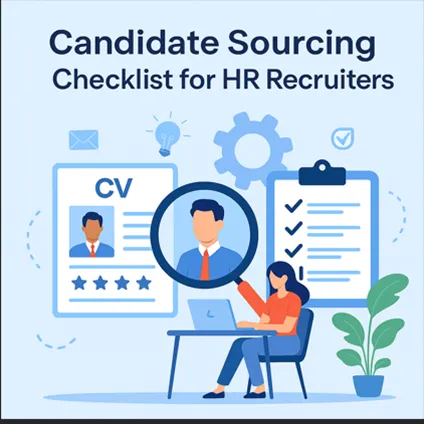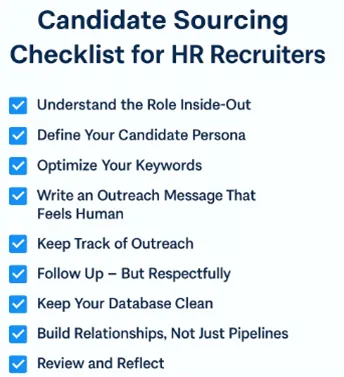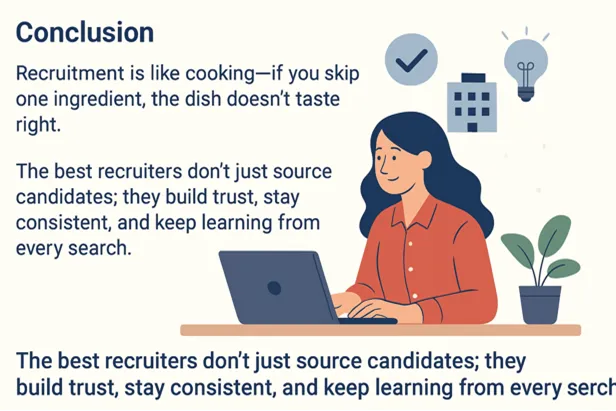
Let's be honest — sourcing is half art, half detective work. Some days you find the perfect profile in 10 minutes, and other days you spend hours with no luck.
Every recruiter I know (including me) has had those moments of "Wait, did I already reach out to this person last month?" or "Did I remember to check referrals before posting the job?"
That's where a candidate sourcing checklist becomes your secret weapon. It keeps your process sharp, consistent, and saves hours of back-and-forth later.
Here's a checklist I personally use and share with new recruiters in my team. It covers everything — from understanding the requirement to keeping your candidate pool warm.
Before opening Naukri or LinkedIn, take 15 minutes to talk with the hiring manager.
Ask:
The clearer you are at this stage, the less time you'll waste later filtering irrelevant profiles.
Think about the ideal candidate as a "person," not just a profile.
Where would they work now? What tools do they use daily? What motivates them?
If you can picture them clearly, you'll know which keywords, job titles, and platforms to search.
This one makes or breaks your sourcing game.
List down:
Don't rely on one platform. Mix it up:
The wider your reach, the better your chances of finding hidden gems.
You've found great profiles — now what? The way you reach out matters.
Bad:
"We are hiring for X role. Send resume."
Better:
"Hi Ritu, I came across your portfolio — loved your project on data visualization. We're hiring for a similar role where that skill could really shine. Would you be open to a quick chat?"
Personalization always wins. Candidates can instantly tell if your message is automated.

Even experienced recruiters forget who they've already messaged. Keep a small tracker — Excel, Google Sheet, or your ATS.
Include columns for:
It saves embarrassment ("Oops, I already messaged this person last week") and helps you follow up with the right timing.
One follow-up after 4–5 days is okay. Don't spam.
A short nudge works best:
"Hey [Name], just wanted to follow up in case my earlier message got buried. No pressure at all—just thought this role might genuinely fit you. Hope you're doing well!"
Many recruiters give up too early. I've had candidates reply on the second or third message saying, "Sorry, missed your earlier note."
Delete duplicates. Mark unresponsive candidates. Update statuses after every call.
A messy tracker leads to missed opportunities. Your future self will thank you for keeping it tidy.
Even if someone says "Not interested," don't close the door.
Add them on LinkedIn. Engage with their posts. Send a note months later saying, "Hey, saw your recent update — congrats on the new role!"
Those small touchpoints turn passive connections into warm leads later.
After every role you close, take 10 minutes to think:
That reflection helps you fine-tune your next sourcing sprint. The goal isn't just to fill one role — it's to keep improving your hit rate every time.

Recruitment is like cooking — if you skip one ingredient, the dish doesn't taste right.
This checklist isn't about being rigid. It's about giving yourself structure so you can focus on what matters most — connecting the right people to the right roles.
The best recruiters don't just source candidates; they build trust, stay consistent, and keep learning from every search.
Fellow recruiters, what's your sourcing ritual?
Do you use a checklist or trust your instinct?
Drop your must-have steps in the comments — let's learn from each other.